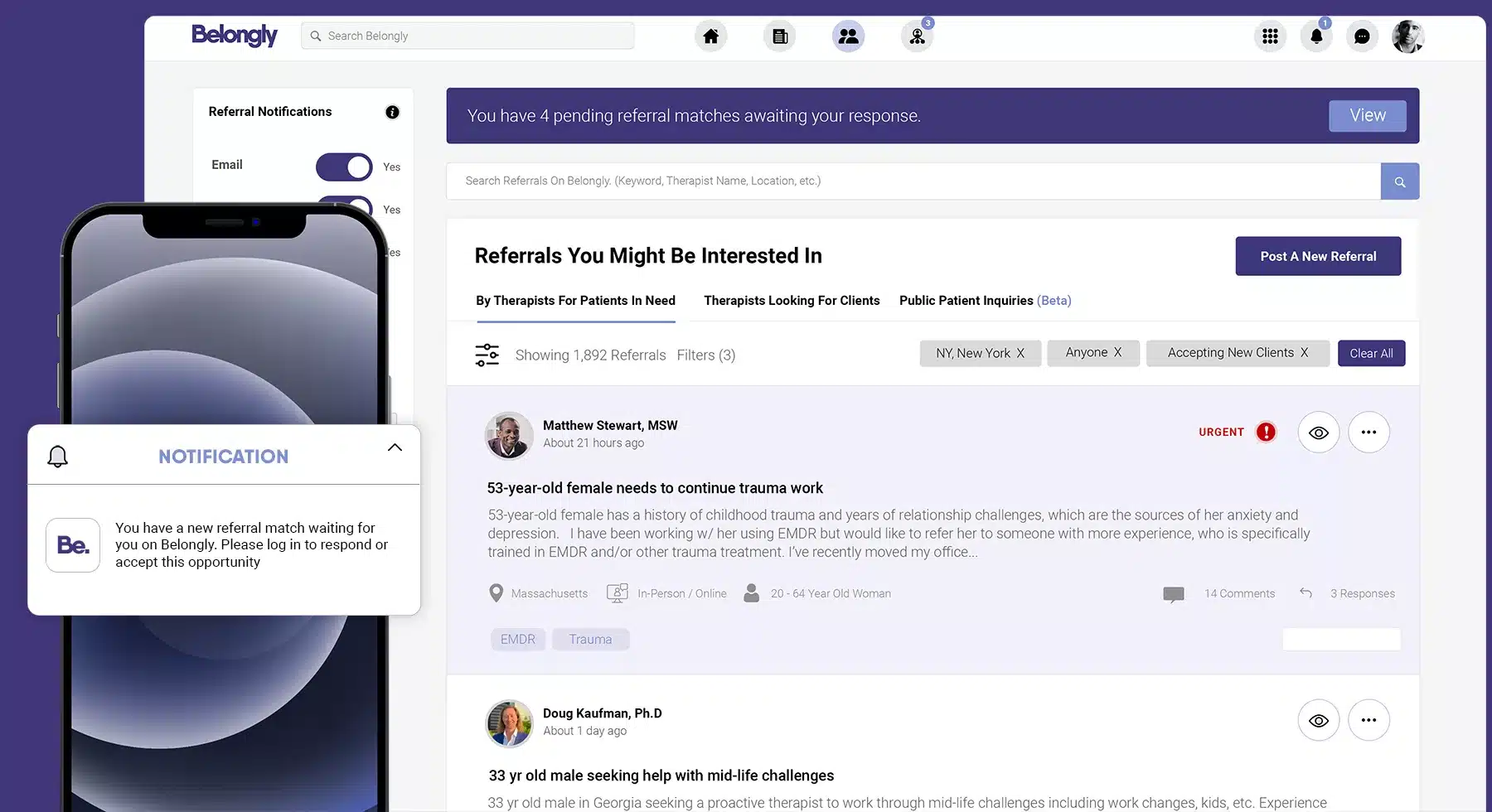The relationship between therapist and client is the foundation of any successful treatment. But what are the components of a strong therapeutic alliance? What strategies can mental health professionals use to build better rapport with their clients? And how can therapists tell if these relationships are working?
This article will discuss the elements of a robust therapist-client alliance and outline practical techniques that you can use to build long-lasting relationships with your clients.
5 elements of a strong therapeutic relationship:
Empathy– Therapists are naturally empathic, but that doesn’t mean they get it right all the time. Empathy involves sharing a client’s emotional experience, no matter how painful. It is difficult and emotionally draining work, which is why sometimes, it can be tempting to use sympathy as a substitute. Sympathy acknowledges clients’ struggles but from an emotional distance. Here are some examples of empathy versus sympathy:
Empathy: “Losing someone you love is devastating. It’s no wonder you are feeling overwhelmed with grief.”
Sympathy: “I’m sorry for your loss, but you will get through this. Time heals all wounds.”
Empathy: “Parenting is hard work. It’s normal to sometimes feel like you are doing it wrong.”
Sympathy: “Parenting is hard work, but everyone figures it out eventually.”
Respect– Respect involves acknowledging clients’ beliefs and perspectives without judgment. Of course, we are all human, and sometimes judgmental thoughts arise despite our best intentions. Addressing these internal reactions in a Belongly consultation group will help ensure they don’t interfere with treatment.
Respect also means inviting clients to participate in treatment planning and review. Instead of approaching sessions as the “expert,” solicit clients’ opinions on treatment approaches and ask for regular feedback about the therapy process.
Genuineness– Honesty builds trust with clients. This includes being “real” in sessions instead of hiding behind a persona. But how do you stay genuine and professional at the same time?
Balancing honesty with oversharing can be a delicate balance, but generally, you can avoid the latter by keeping your clients’ needs central. Share personal experiences only when it’s necessary to communicate empathy and understanding, and even then, be brief and use broad terms. Don’t disclose unless you feel certain that your client will find it helpful. This level of confidence is difficult in the early stages of therapy, so probably best to save the sharing for more established relationships.
Unconditional positive regard (UPR)– A concept first developed by Stanley Standal and then expanded upon by Carl Rogers, UPR is a therapist’s ability to accept and care for their clients without judgment. This does not mean that you have to like everything your clients say or do. Rather, it means that your clients are worthy and lovable regardless of their actions or beliefs. It involves respecting free will and giving clients the benefit of the doubt. Done effectively, UPR can encourage clients to be more open about their thoughts, feelings, and behaviors, leading to a stronger therapeutic alliance and better treatment outcomes.
Active listening- Active listening involves fully engaging with your clients and using both verbal and nonverbal feedback to demonstrate empathy. Some key components of active listening are maintaining eye contact, paraphrasing what your client says, asking clarifying questions, and validating emotions. Active listening also means avoiding distractions and focusing solely on your client. Listening in this way not only fosters deeper connections with your clients but helps to avoid misunderstanding.
4 techniques that can help to strengthen therapeutic alliance:
Mirroring– Reflecting clients’ thoughts and emotions to help them feel seen and understood. This can be done verbally or with nonverbal cues such as posture, gesture, and facial expression.
Curiosity– Showing sincere interest in your client. This can be done by asking open-ended questions and avoiding advice-giving, which can feel condescending and dismissive.
Validation– Acknowledging and giving words to clients’ emotions and experiences. Helping clients understand that their thoughts and feelings are normal and valid.
Eliciting feedback– Checking in with clients at regular intervals. Using feedback to identify ruptures and make treatment adjustments. You can do this verbally in session, but clients might be more honest via a survey like the Helping Alliance Questionnaire.
Keep Reading
Want more? Here are some other blog posts you might be interested in.










